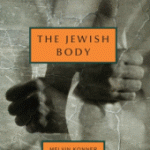
Body and Jewish souls: review of Melvin Konner’s The Jewish Body
The Jerusalem Post, July 10, 2009
Who knew that Dr. Ruth, the grandmotherly sex expert, was a Haganah fighter in Israel’s War of Independence? How often the Nazis’ considered the “final solution” a public health program? And when we think of the nose job do we categorize it as a form of therapy, as some did in the 19th century?
Surprises such as these are sprinkled throughout Melvin Konner’s The Jewish Body. Konner, who earned both his PhD and MD at Harvard and is a professor at Emory University, is a well-known and well-published scholar. And it is in Konner’s able hands that the Jewish body comes to life, representing the individual and collective, the literal and metaphorical, the corporeal and spiritual, and the historical and contemporary. The result is a dense, entertaining text comprised of a variety of topics that ordinarily might not appear between the covers of the same book—from religious law to golem to Jewish boxers to Kafka to current genetic research. Though Konner’s rich and provocative study is at times a bit scattered and occasionally over-simplistic, it ultimately pushes readers to consider the Jewish people, past and present, in a new light.
This holds true for Jewish readers, as well, particularly in regards to the last chapter, titled “Jewish Genes?” Konner includes the question mark for a reason—this chapter dips into the “are we a religion or are we an ethnic group?” controversy. After offering an overview of the genetic traits Jews share with each other, Konner takes the argument a step further, “Almost all the world’s Jews have in common a substantial genetic resemblance to non-Jews of the Middle East. That is, the Jews of Surinam, Morocco, Poland, England, India, Afghanistan, and Brooklyn are all related to the Christians and Muslims whose families have never in many centuries left Lebanon.” Konner, however, acknowledges the danger of calling the Jews an ethnic group, “[I]t is not easy for me to entertain this proposition in the wake of some six million murders of Jews supported by Nazi racial theory.” But, discussing the Jewish people as an ethnic group with clear ties to the region bolsters the argument for Israel—and throughout the book Konner makes his support for the country clear.
The dynamic relationship between Israel and the Jewish people—the connection to and the influence on each other—is an oft returned to topic. Amongst other such issues, Konner continually examines the close link between Zionism and physicality, following it from Herzl’s time through today. Speaking of the earliest Zionists, Konner writes, “[T]hey looked forward to the Jews of the future, farmers, builders, fighters, lovers, redeeming Jewish honor with their bodies.”
However, Konner holds a little too tightly to the vision of the early Zionists—and his depiction of contemporary Israel as a “country of warriors” feels one-dimensional. “True Grit was the name of one of John Wayne’s movies, but the man couldn’t hold the hem of the average Israeli’s trousers,” he writes. “Israelis are the ultimate muscle-Jews, and they are also the automatic-rifle-Jews, tank-Jews, fighter-jet-Jews, and, as a final answer to relentless persecution, nuclear-weapon-Jews.”
I paused and thought of my Israeli friends, family, and acquaintances and I wondered: what about the out-of-shape-Jews? The bamba-eating-Jews? The paint-brush-wielding Jews? The jobnik-Jews? And the refusenik-Jews? While it is clear that Konner is trying to contrast the past Jewish strategy of “mental strength” with the mighty body that is the state of Israel, the result is a picture that doesn’t accurately reflect our pluralistic, complex, and multi-faceted society—and Konner’s depiction of Israel feels out of step with life on the ground.
Though it seems that the Jewish body, Israel in particular, can never be free of controversy or politics Konner himself manages to stay fairly apolitical, apart from his Zionist slant. In his discussion of the Jewish state, he neglects to mention the significant Arab minority that lives within the body of Israel and what their presence means for the whole. He gives only a cursory glance to the Palestinians, who certainly have a tremendous impact upon Israel and, thus, the Jewish world.
Further, though the story begins with his complicated relationship with his own Jewish body, Konner himself quickly recedes into the background. The discussion that follows, which seems to be grounded in and advancing Konner’s personal view of the Jews—but has lost the person behind the view—invariably feels a bit handicapped. The prose becomes awkward in moments, the apparent focus faltering at times, especially when considered in comparison to the broad, smooth, strides Konner makes in the book’s opening steps.
But the reader understands the authorial decisions Konner has made to maintain momentum towards what is, ultimately, his Zionistic vision. And if the reader can overlook the aforementioned bumps in the road, the ride is an enjoyable, informative one. Vis a vis The Jewish Body, Konner has created a veritable grab bag full-to-brimming with tidbits of Jewish history and culture.